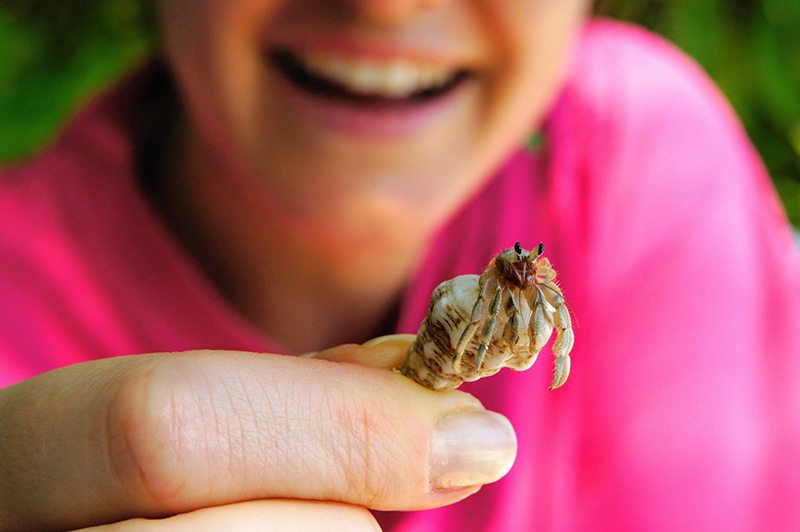You may think that having Hermit Crabs as pets is unusual, but they are really an interesting species and also easy to care and maintain. Hermit Crabs are active and curious in nature. Their personalities are quite recognizable, their unique characteristics and being low maintenance set them apart from other household pets.
Unlike common crabs, Hermit Crabs’ body has a smaller and soft abdomen and they protect their vulnerable bodies by living on empty shells which are mostly snail shells. And as they grow, their size increases too and because of that they will find larger shells, this process continues as they grow.

Fun fact, Hermit Crabs fight other crabs for the shells too! Imagine that! And as a Hermit Crab owner, it’s your role to provide them shells as they grow since they’ll be in captivity.
As for the feeding part, you won’t have any trouble when it comes to what to feed them. Hermit Crabs are omnivores, you can give them veggies or fruits – just make sure to cut them into pieces so they’ll have an easier time eating them. If you don’t have any veggies or fruits at home to feed them, you can head to your local pet store and buy hermit crab pellets to feed them.
5 Handy Tips in Choosing a Hermit Crab
- Land Hermit crabs are very common and quite easy to find in most pet stores
- Assure that the hermit crab is healthy – if it happens to be inactive it could be sick or its molting.
- Make sure that all of its limbs are present, the shell and its thorax isn’t damaged.
- Check and make sure that it has no parasites as it may also cause your Hermit Crab to get sick.
- If you’re already taking care of a Hermit Crab and planning to add one, make sure to match their size. As mentioned before, Hermit Crabs fight other hermit crabs for their shell so it’s best not to get a larger hermit crab as it might dominate the small one for the shell.

Feeding Your New Pet
Wild Hermit Crabs eat a variety of foods and they even hunt smaller creatures for food, they eat the following foods: fallen fruit, leaves, veggies, shrimps, and even seahorses!
So how do hermit crabs locate their food? They do it in two ways, by smell and by seeing what other hermit crabs are eating.
Just like us humans, Hermit crabs require calcium, antioxidants, and carotene to keep themselves healthy. A carotene-deficient crab will have a faded color when it’s in a molting state. So how do you make sure that your hermit crabs will have sufficient amounts of carotene? Feed them with brightly colored veggies like carrots and corn. Basically, the best diet you can provide to your Hermit Crab is the same healthy food you eat.
On the other hand, Land Hermit Crabs are omnivores and not as picky on what food to eat. You can feed them fish, veggies, and meat. You can also feed them leaves but make sure to clean it thoroughly and dry it completely since Hermit Crabs loves their leaves very crunchy.
Hand-Feeding Your Hermit Crab
With a little patience and practice, you have the option to hand-feed your Hermit Crab. Take a slice of fruit and use your hand (right or left whatever you’re comfortable with) and gently pick up your Hermit Crab and place the food near your crab (underneath its claws).
Don’t get worried right away if your crab is not eating right away as it will do a ‘taste test’ first, it will be sticking its antenna into the food and then putting the antenna into its mouth. If your hermit crab is totally not eating it means it’s not interested to eat yet so its time to gently put it down.
Land Hermit Crabs are quite tricky as they only eat based on their metabolism, you cant convince it or force it to eat if it’s not feeling hungry. Whether it is your Hermit Crab’s favorite food or not, it won’t eat unless it’s hungry.
As always, make sure the food you’ll feed to your Hermit Crabs doesn’t contain any chemicals or pesticides.
